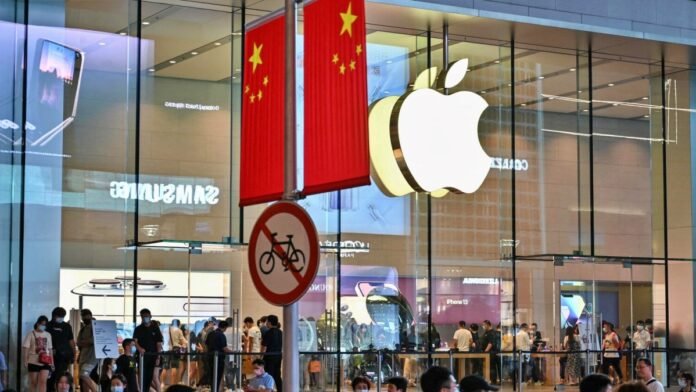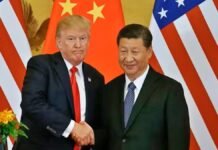
Key Points
- Apple to close its Parkland Mall retail store in Dalian, China, on August 9, 2025 its first permanent retail exit in the country.
- Store closure follows exodus of major international brands and ongoing slump in China’s consumer spending.
- Apple’s China sales fell by 1.6% in Q2 2025, missing targets and marking persistent market weakness.
- Staff from the closing store will be relocated to other Apple locations, with the nearby Olympia 66 Mall store in Dalian continuing normal operations.
- India has now overtaken China as the largest supplier of smartphones to the US, driven by Apple’s dramatic manufacturing shift; India’s share of US smartphone imports jumped from 13% to 44% in a year.
- Apple is actively doubling down on India as its next major growth market.
New Delhi: Apple is set to permanently close its retail outlet at Parkland Mall in Dalian’s Zhongshan District, marking the first time ever it has shuttered a store since opening in China back in 2008. The closure, effective August 9, 2025, comes as a notable retreat in the world’s second largest market for Apple one currently grappling with a slowing economy and persistent deflationary pressure.
Why Is Apple Closing the Dalian Store?
In its statement, Apple cited the departure of numerous international brands from Parkland Mall—including Coach, Michael Kors, and Hugo Boss leaving the shopping center with dwindling foot traffic and retailers. “With several retailers exiting Parkland Mall, we have chosen to close our store there,” an official spokesperson said, adding that all affected staff would be given the option to relocate to other Apple stores most notably, the nearby Olympia 66 Mall location, which remains open.
China Sales Drop: The Larger Picture
Apple’s China sales have been under intense pressure, hampered by weakening consumer demand, intensifying local competition (especially from Huawei and Vivo), and macroeconomic headwinds. In Q2 2025, Apple’s revenue in China fell by 1.6%, missing analyst estimates ($16 billion actual vs. $16.8 billion forecast), and continuing a sequence of year-on-year declines. Overall, Apple’s revenue in China for the previous year totaled $66.95 billion, a nearly 10% drop since its 2022 peak. The only bright spot was a brief rebound in iPhone sales tied to steep discounts and government trade-in subsidies, but analysts remain cautious about the outlook as consumer spending remains subdued.
Strategic Shift: India’s Meteoric Rise
As Apple’s prospects flatten in China, India has rapidly emerged as a new production and market stronghold. According to new Canalys research, in Q2 2025 India became the single largest supplier of smartphones to the US for the first time, overtaking China. India’s share of US smartphone imports jumped from 13% last year to a staggering 44%, largely owing to Apple’s growing reliance on Indian manufacturing. China’s share, by contrast, collapsed from 61% to just 25%. Apple has accelerated its “China Plus One” supply chain strategy, pouring investment and resources into Indian production hubs even as it maintains legacy manufacturing in China for high-end models.
Apple’s Position
Apple continues to stress its commitment to Chinese consumers and staff even in the midst of deepening retail and economic restructuring. The Parkland Mall closure impacts only one of Apple’s 56 stores in Greater China, a vital yet troubled region within its global footprint. The Olympia 66 Mall store in Dalian will remain open, ensuring continued service for local customers. Apple underlined its priority “not to compromise on customer experience” and said that all employee jobs affected by the store closure will be preserved via transfers.
The Parkland Mall closure signals a significant shift for Apple in China, underscoring the brand’s intensifying challenges in its second-biggest market. At the same time, India’s spectacular rise as both a top manufacturing hub and a vital future market marks a new chapter for Apple’s global ambitions. As Apple pivots to India and readjusts its China presence, industry watchers see a landmark realignment in smartphone supply chains and consumer focus for 2025 and beyond.





















































